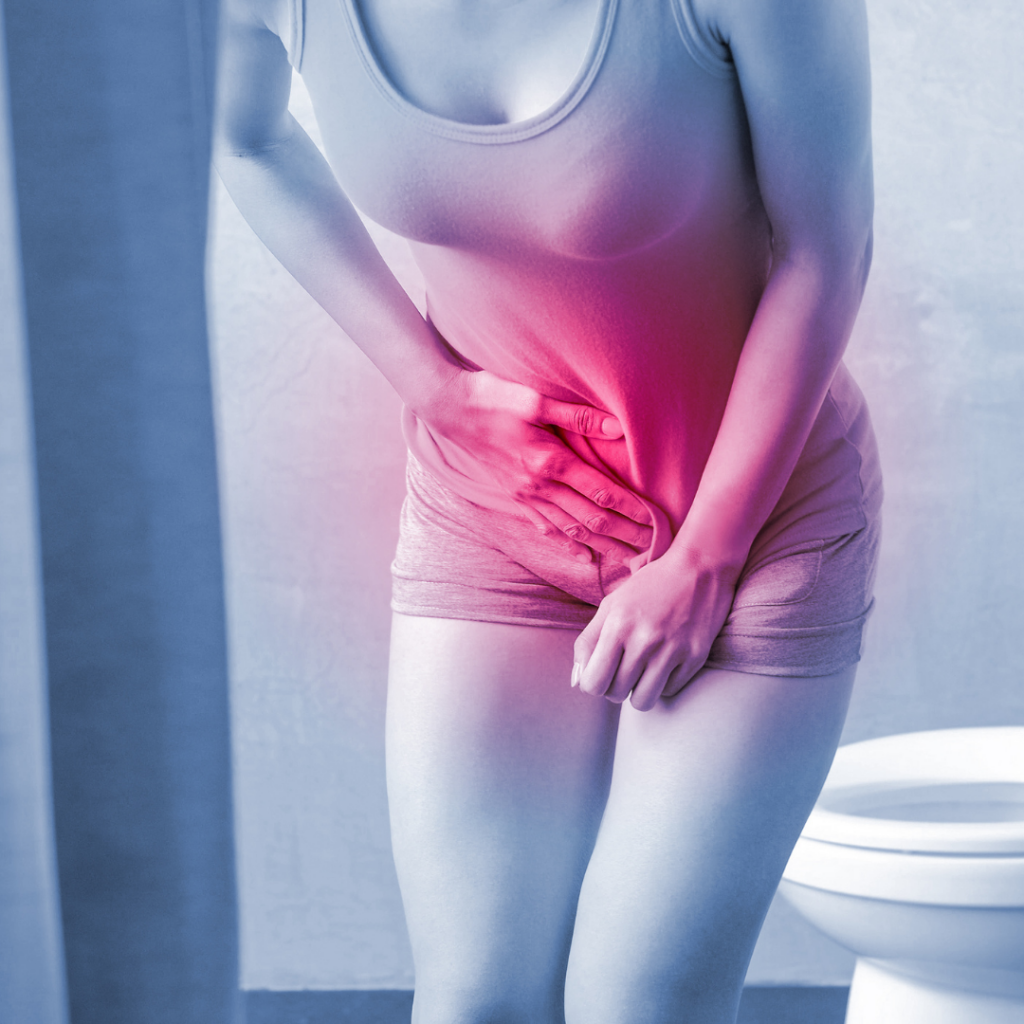- Fast results
- 4,000+ locations
- 4.8 star rating
Need Help? (888) GET LABS
We are currently experiencing technical issues. If you are unable to access your results please call 888 GET LABS
Need Help? (888) GET LABS
Need Help? (888) GET LABS


To pee or not to pee, that is the question your urinary bladder answers.
When it comes to problems concerning your urinary system, most of the symptoms naturally involve the frequency of urination and the amount of urine expelled in the process.
Hence, strengthening your urinary bladder is imperative to keep the system healthy.
Urinary incontinence is a condition wherein you lose control of your bladder. As a result, you may experience urine leakage and the inability to control the urge to urinate even after already expelling large volumes of urine.
Experts often treat urinary incontinence as a symptom of another underlying health condition such as urinary tract infection (UTI) and overactive bladder.
The detrusor muscle that aids in bladder control with urinary incontinence is often affected. When the bladder is full, these muscles contract to release the urine through the urethra.
However, if you have urinary incontinence, this reflex becomes increasingly involuntary than it already is.
Urinary incontinence can also directly result in a weakened urinary bladder, providing an overview of your general urinary tract health.
As much as people assume that bladder health is sustained on its own, several habits could diminish urinary bladder functions.
To pile on this critical issue, the health of your bladder is only often revealed once conditions such as overactive bladder and urinary tract infection occur. Without immediate and proper action, it could be too late for conventional mild treatment.
Fortunately, you can keep your bladder in its optimum health, securing its functions with the correct practices.
So, whether you’re experiencing trouble holding your pee or simply looking for ways to prevent diseases and disorders concerning your urinary system in general, stick around and learn about how you can strengthen your bladder.
The amount of water in your body pretty much determines the quantity and quality of urine you produce.
It is common knowledge that the more water you drink, the more your urine output. Hence you can expect to urinate more and release toxins along with it.
However, it’s a different narrative when you’re frequently urinating, but your water intake is low. It could suggest an underlying medical condition.
On the other hand, drinking less water than your body requires can lead to dehydration. With that, the urinary bladder can suffer. First, you become prone to urinary tract infections as disease-causing microbes are not flushed out of the system.
Second, your urine becomes too concentrated as it has more solutes than water. As a result, the urine color becomes darker and in smaller quantities.
Moreover, you increase your risk of developing kidney stones. Without enough fluids, the accumulated minerals won’t be diluted and, in turn, form into crystals which becomes too painful to pass.
The recommended daily water intake is eight glasses a day. However, this can vary based on age, sex, and other factors. Consult your doctor for the optimum fluid intake for your health.

Pelvic floor muscle training in the form of Kegel exercises is known to strengthen the muscles supporting the urinary bladder.
Kegel exercises are particularly popular among women as these exercises also help the uterus and the rest of the organs in the pelvic region. Nonetheless, men can also greatly benefit from this training, especially managing or preventing urine leakage.
When you do Kegel exercises regularly, you increase your bladder control. In this sense, you can prevent urinary incontinence. This condition is characterized by the sudden urge to pee or leaking a few drops of urine whenever you sneeze, cough, or laugh.
Moreover, you can also control fecal incontinence or stool leakage.

Holding your pee is always a bad idea. While there are certain moments in which you can’t do anything but resist the urge to pee, making a habit of it, especially when you have the choice to simply urinate, will only damage your bladder.
One of the worst effects of regularly holding your pee is bladder stretching. With this condition, your bladder becomes too stretched out that contraction becomes impossible.
When bladder stretching happens, your bladder won’t be releasing urine the normal way. Therefore, you will have to rely on a catheter which is generally an unpleasant experience.
Other adverse effects of holding your urine include higher risks for UTI and kidney stone formation, painful urination, and urinary leakage.

When it comes to urinating, time is of the essence. There’s no need to rush the process. Simply let the flow run its course. Likewise, avoid cutting your urination midstream. Otherwise, you’ll end up failing to empty your urinary bladder.
Just like when you hold your pee in, exerting too much effort to speed up urination can damage the muscles that support the bladder. Moreover, since some quantities of urine are left in the bladder, it could lead to infections.
It is also vital to ensure that you are in a comfortable position when urinating. This way, your muscles are relaxed, and the stream can flow without interruptions or discomfort.

Drinking alcohol too often can harm your bladder. For starters, alcoholic beverages are generally diuretic, which increases the amount and frequency of urination. However, the level of frequency is not similar to when you drink plenty of water.
Likewise, alcohol consumption is associated with lower urinary tract symptoms.
In most cases, alcohol drinking leads to dehydration and more concentrated urine. This can irritate the urinary bladder, leading to involuntary bladder contraction.
In the same way, caffeine also triggers frequent visits to the bathroom. Like alcohol, caffeinated drinks are also diuretics. When consumed in large amounts and daily, it can lead to inflammation and irritation of the urinary bladder linings.

Smoking can irritate your bladder. Nicotine, in particular, causes inflammation and weakens the muscles controlling the bladder. As a result, you may find it more challenging to control urination when you’re a chronic smoker.
Likewise, smoking aggravates several conditions related to urinary bladder health. One example is interstitial cystitis which is common among women. This condition makes it painful and difficult to urinate. If you’re a smoker, these symptoms are worsened.
Moreover, smoking also triggers incontinence. As the bladder is weakened by nicotine, you can leak a few drops of urine when you cough.

Digestion and urinary tract functions are connected to a certain degree.
For example, when your bowel movement is poor, it causes pressure on the urine flow. Therefore, ensuring that you don’t experience frequent constipation is a helpful way to strengthen your bladder control.
With that, you have to ensure sufficient water intake and the inclusion of high-fiber foods in your diet. Some of the most beneficial organic foods for your urinary tract health include bananas, whole grains, legumes, citrus fruits, green leafy vegetables, and berries.
Moreover, eating fruits and vegetables rich in vitamin C increases urine acidity, protecting your bladder from infections.

Peeing after sex can be treated as a preventive measure against UTI. However, you may wonder how UTI develops in relation to sex.
According to experts, the bacteria responsible for UTI typically live around the anus. During sex, where the activity becomes too physical, these bacteria are repositioned in the genital region. This is more common among women than men considering the proximity of the anus to the vagina.
So, that’s how sex can lead to UTI. Nevertheless, this can be avoided if you urinate after sex. The urine flow will flush the bacteria out of the urethra, preventing complete transmission or infection.
On the other hand, urinating after sex won’t necessarily prevent sexually transmitted infections (STI). If you suspect STI based on several symptoms, the best treatment method starts with a proper diagnosis. Take the necessary STI or STD blood tests as soon as you can.

Wearing cotton underwear allows proper airflow in the genital area preventing bacterial growth in the urethra.
Disease-causing bacteria love a warm and moist environment. And as you may already know by now, UTI is a condition that can weaken the function of your bladder. Hence, when you provide an environment that encourages microbial growth, you also increase your susceptibility to UTI.
On the other hand, sufficient airflow will keep the urethra and the genital region dry. The cotton fabric is soft and absorbent so that air can easily pass through it.

We’ve established how important airflow is in preventing infections. So with that, it’s pretty understandable how wearing tight trousers generally goes against this preventive measure.
When you wear exceedingly tight pants or even underpants, you block proper airflow making the genital region a breeding ground for UTI-causing bacteria.

The best way to check your urinary health is to visit your doctor. If you have symptoms related to UTI, overactive bladder, or other related conditions, you will have to undergo some tests.
On the other hand, if you’re coming for a routine checkup, part of the tests you will have to go through is a urinalysis. This test will provide vital information about your urinary health.
Simply put, here are three practical ways to evaluate your urinary health.


We now offer pharmacy discounts through our PersonalabsRx platform.
We now offer pharmacy discounts through our PersonalabsRx platform.